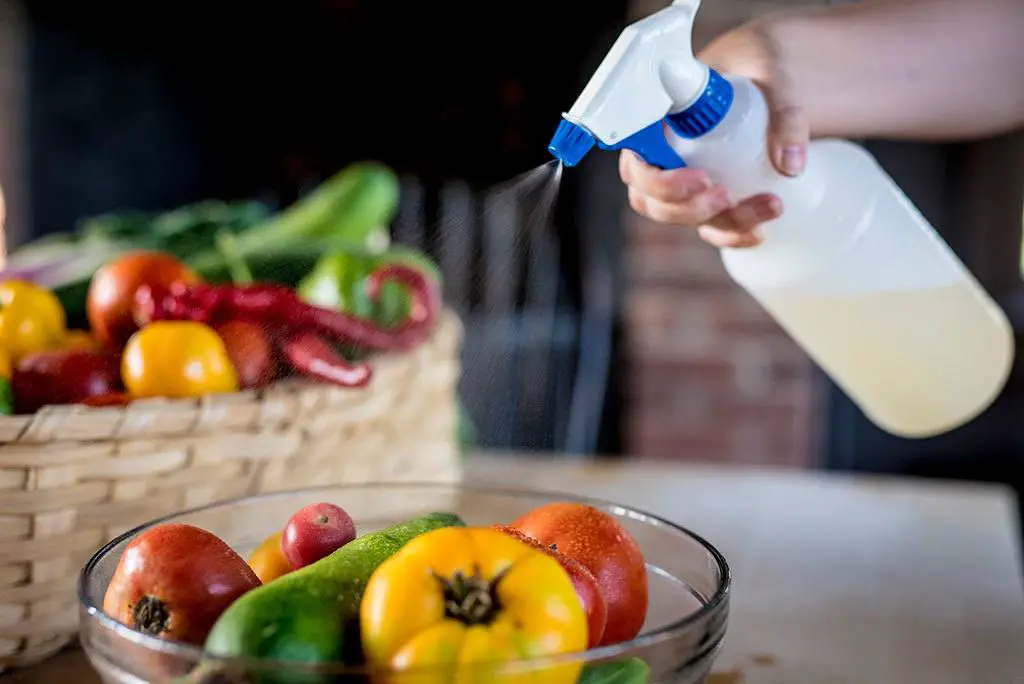How to Clean Vegetables from Pesticides and Bacterial Residue (5 Steps to Safe Veggies)
Whether it is simple broccoli or batchoy—greens or potatoes—your vegetables need to be sanitized safely and simply for the enjoyment of eating something clean and crisp as well as safe and free of pesticides or bacteria. Perhaps you think you will need another chemical or spray in order to purify and clean your vegetables, and there are many companies helping to promote this idea through rinses and washes for purchase.
Without such additional chemicals or formulas, it may seem like there is no sure way that vegetables can become free of harmful pesticides and bacteria, but there are few simple steps to get a crisp, clean vegetable from the supermarket without fear. You do not necessarily need a special spray for the tips containing in our article. In this post, we teach how to clean vegetables from pesticides and bacterial residue in five easy-to-follow steps for those striving for a simple and clean veggie.
Pesticides and Bacteria: Obstacles to Wash
A concerning and very worrisome issue that many people face is that there seems to be no way of knowing whether a vegetable from the ordinary supermarket is safe to eat. If you simply rely on cooking for the vegetables, you run the risk of exposing yourself to dangerous chemical agents and stomach-turning bacteria. But, if you choose to scrub, rinse, wash, and repeat with every vegetable, you are not sure when to stop or whether you are wasting your time since these chemical and bacterial additives are for the most part invisible and tasteless.
As pesticides today are advanced and pervasive like RoundUp, they are incredibly discreet as well as dangerous to ingestion by humans. The use of pesticides means fewer insects and imperfections. A perfect vegetable means that you enjoy it as well as find it nutritious, and pesticides have the unfortunate attribute of being incredibly potent against non-plant organisms. The use of pesticides, however, is unlikely to change and so those with concern learn how to return their vegetables to their purest and most natural state on their own.
Bacteria, on the other hand, can grow over time and accumulate after the fact of picking—turning your stomach and killing your appetite without proper avoidance. You may have tried many sprays and washes or found yourself over-washing your vegetables (sacrificing their beauty and taste for sheer sterility). Let us consider some of the few requirements that our technique for washing vegetables has in the next section. Click Here for the latest pricing on a top rated natural fruit/vegetable cleaner I recommend.
Requirements of Simple, Clean Vegetable Washing
It is likely that you already have everything that you need in your kitchen for completely cleaning your vegetables of chemical agents and nasty bacteria. The following are the simplest requirements of creating a crisp and clean wash for your vegetables.
- One Teaspoon of Sea Salt: Whether you are a cook who prefers sea salt or simply has it on file for such a need, it is an effective cleanser that can be used to clean vegetables when used as part of a vegetable bath or wash. You will want to use at least a teaspoon of salt per cup to keep the concentration and cleaning power of sea salt up and effective at removing pesticides and bacteria.
- One Teaspoon of Vinegar: There are many varieties of vinegar that exist and that are effective for cleansing vegetables (as well as parts of your home). Choose one that you have a good amount of as you will want to add at least one teaspoon of vinegar per cup of water so that the vinegar remains powerful and potent against pesticides and bacteria.
- Fresh, Clean Water: Your vegetables will only be as clean and free of chemicals and bacteria as the water you wash and rinse them in. If you can use cold, filtered water for your vegetable wash and bath, as this will retain the color of your vegetables as you dip and scrub them while also reducing any contamination from the water itself (like bleaching agents or softeners).
- Large Bowl: Unless you recently and completely sanitized your sink, using a large bowl for your vegetable bath is ideal as it will contain fewer risks to contamination from other foods or from the drain of your sink as you rinse pesticides and bacteria from your vegetables. Consider using a bowl which is clear so that you can tell when your vegetable washing liquid needs to be refreshed based on color and clarity.
Steps to Cleaning Vegetables of Pesticides and Bacteria
Now that you have considered some of the most apparent issues you face when trying to get a simple, clean vegetable from the supermarket during your preparations at home, we are ready to begin our tutorial on cleansing your vegetables using the items above for a safe yet robust vegetable wash. Follow these steps for a crisp, clean veggie every time.
-
Mix one teaspoon of sea salt per cup of water.
For the reasons we covered in the list of requirements for cleaning a vegetable of pesticides and bacteria, you will mix one teaspoon of salt into fresh, clean water until the solution is completely dissolved. The mixture will gently and effectively remove bacteria and pesticide due to the natural cleansing properties in sea salt; and, with vinegar, it makes a powerful combination.
-
Dilute one teaspoon of vinegar per cup of water.
In addition to mixing salt into your water mixture, you will want to also add the vinegar of your choice to the bowl, stirring so that the solution is completely mixed for the best cleaning result. Vinegar will sanitize your fruits and vegetables gently without changing the taste of your veggies through its dilution.
-
Soak your vegetables for a few minutes in your homegrown vegetable wash.
The main body of this process is the act of soaking the vegetables which are when harmful pesticides and sickening bacteria will be released from your vegetables and dissolve safely in the wash. For the best and most consistent results, you may want to set a timer for the process to make sure you do not let impatience get the best of your vegetables.
-
Rinse your vegetables off the salt and vinegar solution.
After you have allowed your vegetables to soak in the salt and vinegar solution for a good amount of time, you can now rinse your vegetables using cool, clean water over the sink where any last remaining bacteria or pesticides will be removed by the steady, purifying stream. You will also use the rinse to remove any salty or vinegar flavor from the skin of your vegetables.
-
Repeat as needed.
You will likely need to repeat these steps, especially if you are washing many vegetables since pesticides, dirt, and bacteria will accumulate in the bowl and render your mixture ineffective. Using a clear, large bowl, you will notice the quality and clarity of the water begin to change. This communicates that you are in fact purifying your vegetables effectively, as well as signaling that it may be time to refresh the power and purity of your vegetable cleaning mixture. For this natural process, simply whip up another clean and simple batch of vegetable wash, and repeat the process of allowing the vegetables to soak and be purified.
Finally, a Fresh Vegetable! Concluding the Process
https://www.youtube.com/watch?v=J-yIuziyK_M
If you have one main dish or multiple vegetables to purify, you do not need to worry that your vegetables will become soapy by trying to rinse and scrub them with a dish or other harmful, taste-killing soaps. The ease and simplicity of purifying and cleansing your vegetables are as easy as following the five steps above and including the natural power of salt and vinegar to cleanse away bacteria and pesticides. All you need are a few simple ingredients and tools, like fresh, clean water and a large bowl, and you can rinse away your concerns over toxic and stomach-turning contaminants to your food. Click Here for the latest pricing on a top rated natural fruit/vegetable cleaner I recommend.

